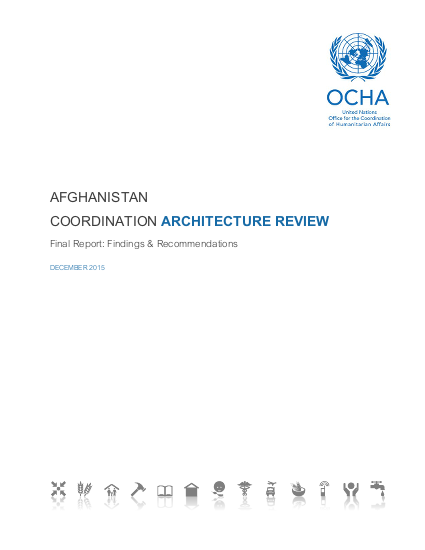
1. There is overall agreement that humanitarian coordination is still required in Afghanistan. 2. The scope and scale of humanitarian needs have remained consistent with the context that first led to the activation and requirement for the cluster structure to be established. Humanitarian needs remain, which cannot be adequately addressed by the Government. Furthermore, their position as a party to the conflict driving humanitarian need requires that third party actors which deliver assistance remain in order to ensure impartiality of humanitarian response. 3. Some improvements seen in the national response to emergencies at the PDMC level particularly, and more recently through the NSC are piecemeal and not representative of a nationalsystem wide approach to managing disaster planning and response. Serious gaps remain in terms of establishing a centralised body to coordinate preparedness, response and risk reduction. Furthermore, other than MRRD, the relevant line ministries have not demonstrated the sufficient capacity or the willingness to mobilise dedicated resources to take over cluster responsibilities.